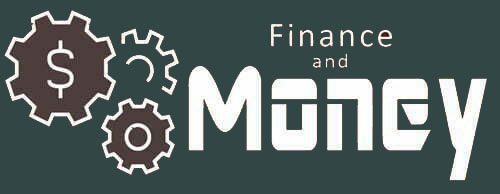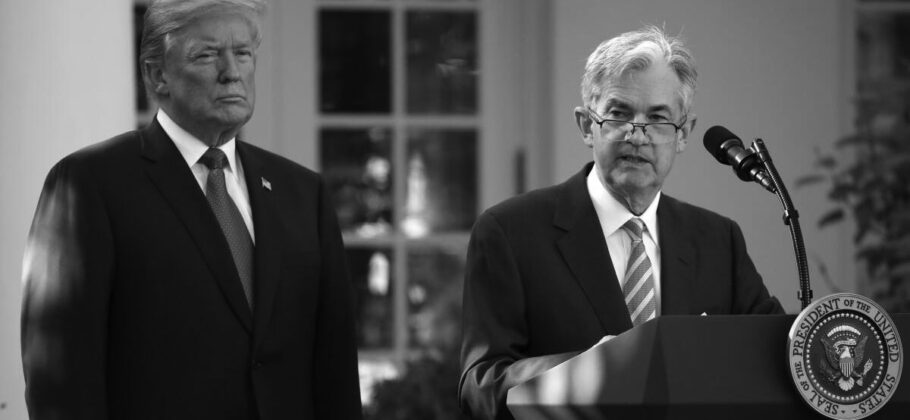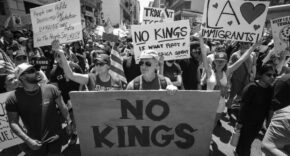As President Donald Trump executes his second term, his economic strategy is taking shape in bold and decisive moves. One of his key focuses has been urging the Federal Reserve to cut interest rates, a maneuver that aligns with his broader economic policies, including aggressive trade tariffs. Trump’s calls for rate cuts are not mere reactions; they appear to be a calculated effort to sustain economic growth and support the transition into his new trade paradigm.
Trump has consistently argued that lower interest rates will help offset the inflationary impact of his tariffs while keeping the economy strong. His insistence on the Fed making this move suggests he sees it as an essential part of his overall economic plan. His recent Truth Social post made his stance clear:
“The Fed would be MUCH better off CUTTING RATES as U.S. Tariffs start to transition (ease!) their way into the economy. Do the right thing. April 2nd is Liberation Day in America!!!”
This message underscores his belief that interest rate cuts will play a crucial role in mitigating any short-term disruptions caused by his trade policies.
The Role of Tariffs in Trump’s Economic Vision
Since returning to office, Trump has aggressively pursued tariff policies to reconfigure global trade. His administration has reinstated 25% tariffs on steel and aluminum, implemented new reciprocal tariffs, and imposed a 20% increase on Chinese imports. On April 2, his administration is expected to reveal the results of a global trade study, which will likely bring another wave of tariffs to counteract what Trump views as unfair trading practices by other nations.
The president sees these tariffs as necessary tools to level the playing field for American manufacturers and workers. While they may result in higher short-term costs, Trump has argued that they will ultimately benefit the U.S. economy by bringing jobs back and making American industries more competitive. However, he acknowledges that this transition will not be without challenges, which is why he is pressing for interest rate cuts to support businesses and consumers as they adjust.
The Federal Reserve’s Response
Despite Trump’s calls, Federal Reserve Chair Jerome Powell has maintained a cautious stance. The Fed has kept interest rates steady, signaling that while rate cuts may be on the horizon, they will be implemented based on economic data rather than political pressure. Powell has acknowledged that tariffs contribute to inflation but insists their impact will likely be temporary.
At a recent press conference, Powell addressed the tariff issue multiple times, stating:
“I do think with the arrival of the tariff inflation, further progress may be delayed” in reaching the Fed’s 2% annual inflation target.
He also noted that while long-term inflation expectations remain well-anchored, there is increasing concern among businesses and households about rising prices. This uncertainty has made the Fed reluctant to act too quickly, as policymakers continue to assess how trade policies will impact economic growth.
Powell further explained the complexity of the situation, saying:
“It would be challenging to determine how much of any goods price inflation is attributable to tariffs and how much is due to other factors.”
While the Fed has indicated potential rate cuts later in the year, it remains wary of acting too soon. Trump’s strategic persistence, however, may accelerate the timeline if economic conditions shift.
The Potential Economic Impact
The debate over interest rate cuts comes at a time when the U.S. economy is showing mixed signals. Inflation has not decreased as much as many consumers would like, and high interest rates have put pressure on the housing market. Economists predict that growth may slow in the coming months, which could give the Fed more reason to consider rate cuts.
However, Trump’s strategy presents an interesting dynamic. On one hand, lower rates could make borrowing cheaper, boosting investment and consumer spending. On the other hand, tariffs could push prices higher, leading to inflation concerns. The president’s belief is that the two factors will balance each other out, creating a more resilient economy in the long run.
Detractors and Criticism
Critics argue that Trump’s push for rate cuts could lead to overheating the economy, especially when combined with tariff-driven price increases. Some economists worry that artificially low rates could lead to financial instability and undermine the Fed’s independence.
There is also a political dimension to the debate. Some opponents suggest that Trump’s calls for rate cuts are designed to boost the economy ahead of the next election cycle. However, his track record indicates a long-standing interest in lower rates, reinforcing the idea that this is part of a broader economic blueprint rather than a short-term political maneuver.
During his first term, Trump frequently criticized the Fed for raising rates, at one point calling them “boneheads” and comparing Powell to a golfer who couldn’t putt. In contrast, his approach this time has been more strategic, aiming to align monetary policy with his trade agenda.
A Well-Planned Economic Strategy
Far from acting impulsively, Trump appears to be orchestrating a comprehensive economic strategy. By implementing tariffs and simultaneously pushing for lower rates, he is positioning the U.S. economy for a transition that could bring long-term benefits. His approach forces the Fed to reconsider its stance while ensuring that businesses and consumers can navigate the shifts in trade policy with minimal disruption.
Even within his administration, there are differing views on how aggressively to push the Fed. While Treasury Secretary Scott Bessent has emphasized the need to lower long-term borrowing costs, other key advisors have argued for maintaining the Fed’s independence to preserve confidence in the economic system.
Nonetheless, Trump has made it clear that he intends to keep up the pressure. As he stated in a recent interview:
“I don’t think I should be allowed to order it, but I think I have the right to put in comments as to whether the interest rates should go up or down.”
This suggests that while he acknowledges the Fed’s independence, he believes his administration has a role to play in shaping economic policy.
With the next round of tariffs set to take effect on April 2 and the Fed signaling possible rate cuts later in the year, the coming months will be crucial in determining the direction of the U.S. economy. Trump’s economic moves reflect a leader who is actively shaping policy to fit his vision rather than passively reacting to market forces. Whether the Fed aligns with his strategy or not, it is clear that Trump is laying the groundwork for an economy that operates on his terms.
FAM Editor: Trump’s pressure may also be part of a strategy to blame the Fed for any near term economic downturn, and we believe that in this cae the war against inflation is probably the more important one. We are confident that Trump’s economy in 18 months will be excellent.





